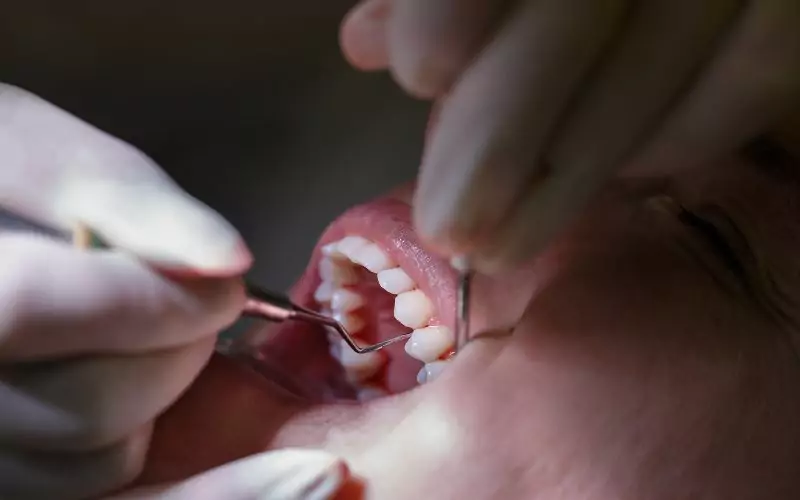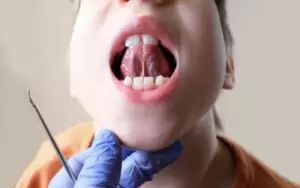Table of Contents
ToggleGum Disease – Understanding the Different Stages
At your last dental appointment you were told you have gingivitis or periodontal disease but what does this mean??

Gingivitis – The first stage of gum disease is inflammation of the gingiva (gums) without bone loss. This is a non-destructive stage of gum disease. Inflammation is the response our body produces to bacterial biofilms (also known as plaque).When plaque is continually present in the mouth you may notice the first sign of inflammation, which is bleeding gums.
The good news is gingivitis is reversible very easily with good oral hygiene and regular dental hygiene appointments. However, without treatment, gingivitis can progress to periodontitis.
It only takes twenty four to forty eight hours for plaque that is not removed from your teeth to turn into calculus, also known as tartar. Daily brushing and flossing helps control plaque and calculus formation, but those hard to reach areas will always need special attention from a dental hygienist.
Dental Hygiene Maintenance
At dental appointments your hygienist will measure pocket depths (the space between your gum and tooth) to ensure that they are healthy, healthy readings is considered to be between 1-3mm. The plaque and calculus is carefully removed with instruments from above and below the gum line.
The dentist may prescribe dental x-rays as they are essential for detection of decay, infections, tumors, cysts, bone loss, determine tooth position, and location of calculus. Your dental hygienist will review oral hygiene instructions and home care techniques to help prevent dental disease.
Periodontitis –When long term (chronic) inflammation occurs it can lead to periodontitis. The inflammation of the gingiva results in tissue destruction and bone resorption around the teeth. Periodontitis is the leading cause of tooth loss.
There are 3 stages of Periodontitis:
1. Early periodontitis – With this stage, gingivitis progresses into the deeper periodontal pockets depths. Inflammation of the tissues that attach the teeth to the bone will result into early or beginning bone loss.
2. Moderate periodontitis – This next stage of gum disease results in moderate bone loss (20 to 50%) of root surfaces of the teeth due to continued destruction of the surrounding tissues and bone. Periodontal disease is “cyclical” — it goes in cycles with bursts of activity, followed by a period in which the body tries to recover. This is called chronic inflammation, or frustrated healing.
3. Advanced periodontitis -With the final stage of gum disease, there is severe bone loss (50 to 85%) of the tooth’s root. This stage includes looseness of teeth, moving teeth, abscess formation with red, swollen and painful gums. The end results can make eating and even smiling difficult and uncomfortable, and can lead you losing all your teeth.
What can you do??
Treatment of periodontitis:

Periodontal treatment methods depend upon the type and severity of the disease. Your dentist and dental hygienist will evaluate for periodontal disease and recommend the appropriate treatment needed. After a thorough periodontal screening and examination we may choose more aggressive therapies aimed at eliminating or reducing the amounts of bacterial poisons and plaque accumulating below the gum line.
Deep cleaning:
If your condition is more severe, a deep scaling known as root planing procedure may be performed. Root planing helps to smooth irregularities on the roots of the teeth making it more difficult for plaque to deposit there.
Removal of bacteria above and below the gum line so that proper healing can occur to prevent future bone loss and to achieve tissue regeneration.
This treatment is usually done one or two sections of the mouth at a time while the area is frozen with topical and local anesthetic.
In this procedure, calculus, plaque, and toxins are removed from above and below the gum line by way of (scaling) and rough spots on root surfaces are made smooth (planing). This procedure helps gum tissue to heal and pockets to shrink.
Your dental hygienist will provide home care instructions on improving your daily oral hygiene habits. Medications may be prescribed, such as medicated mouth rinses to help control infection and promote healing. If the pockets do not heal after deep scale, periodontal surgery may be needed to reduce pocket depths.
For life long healthy teeth and gums maintain a good oral hygiene routine daily and visit your dentist and dental hygienist regularly at least twice a year.
We offer many different services, including gum grafting, and gum reshaping. To schedule an appointment today contact Century Stone Dental.
905-545-4833 or by email [email protected]
No matter your age, dental condition, and if you have a million questions, Dr. Sims can assist you or your young children in a professional manner and loves answering any of your questions or concerns. Dr. Sims grew up in Grimsby playing basketball, so he’s always up for talking about the Raptors! He’s also a football fan - go Buffalo Bills! In his free time, if he’s not watching a basketball game or football game, you’ll likely find him working out, cooking (got any new recipe ideas?), and of course, spending time with his amazing family.
- Tongue Tie Surgery: Medical or Dental? Your Complete Guide - February 28, 2024
- What to Eat After Tooth Extraction - January 16, 2024
- What Medical Professionals Treat Tongue Tie? - January 5, 2024











